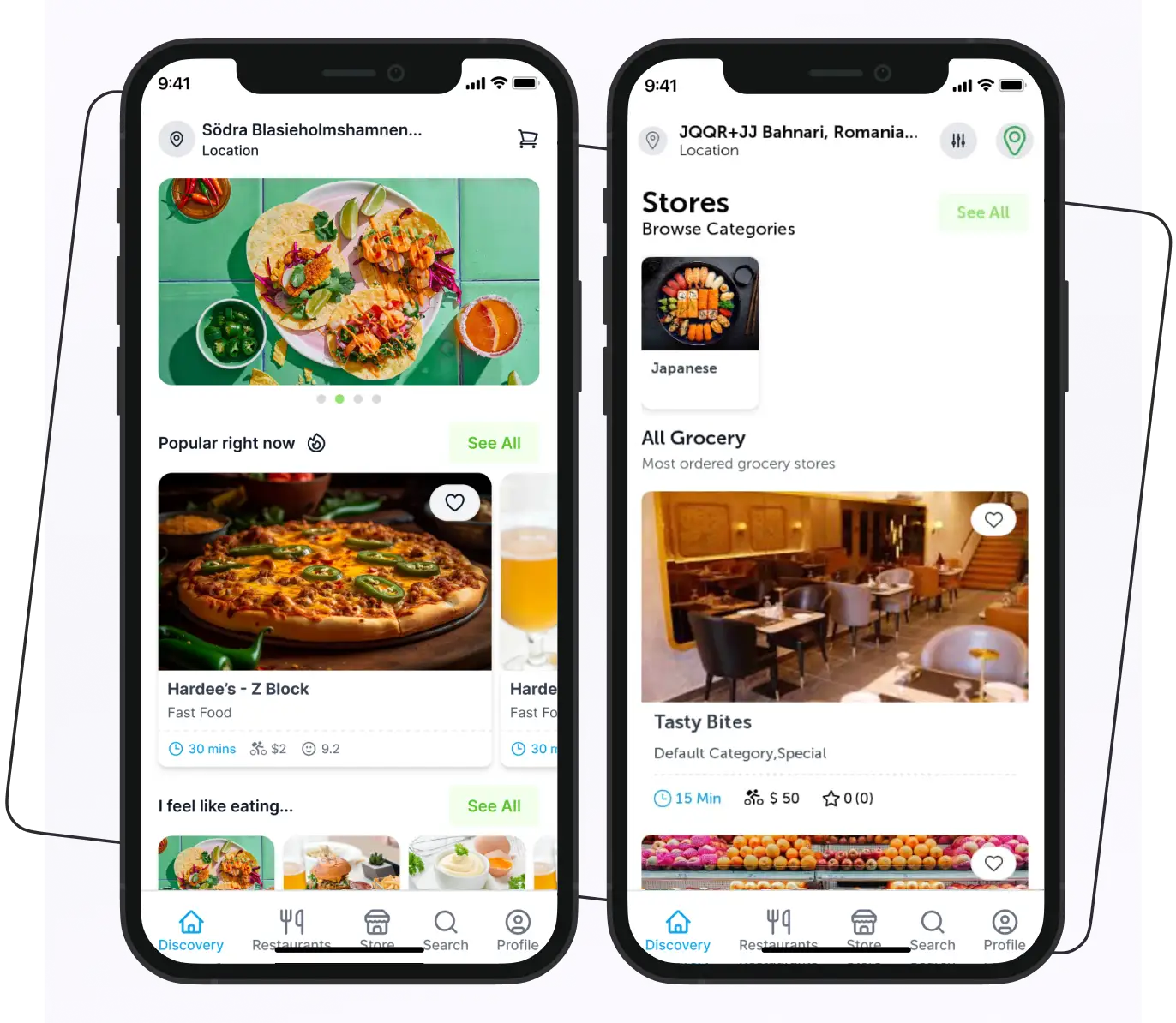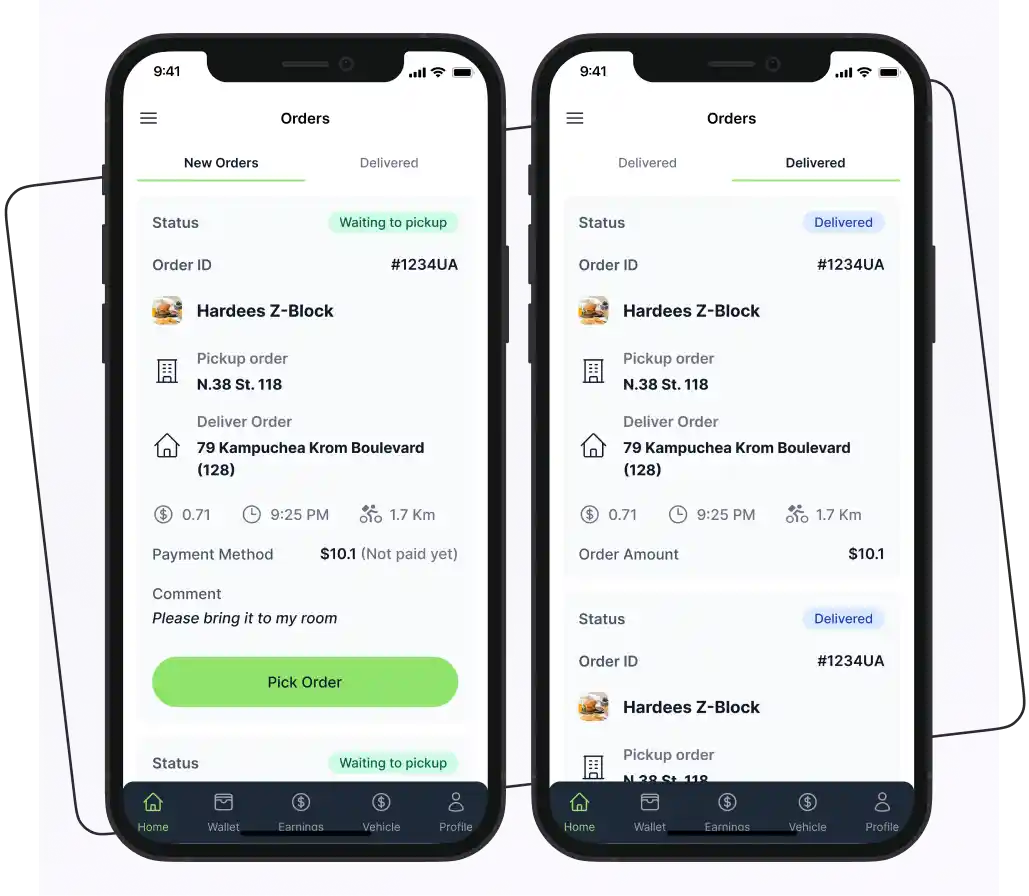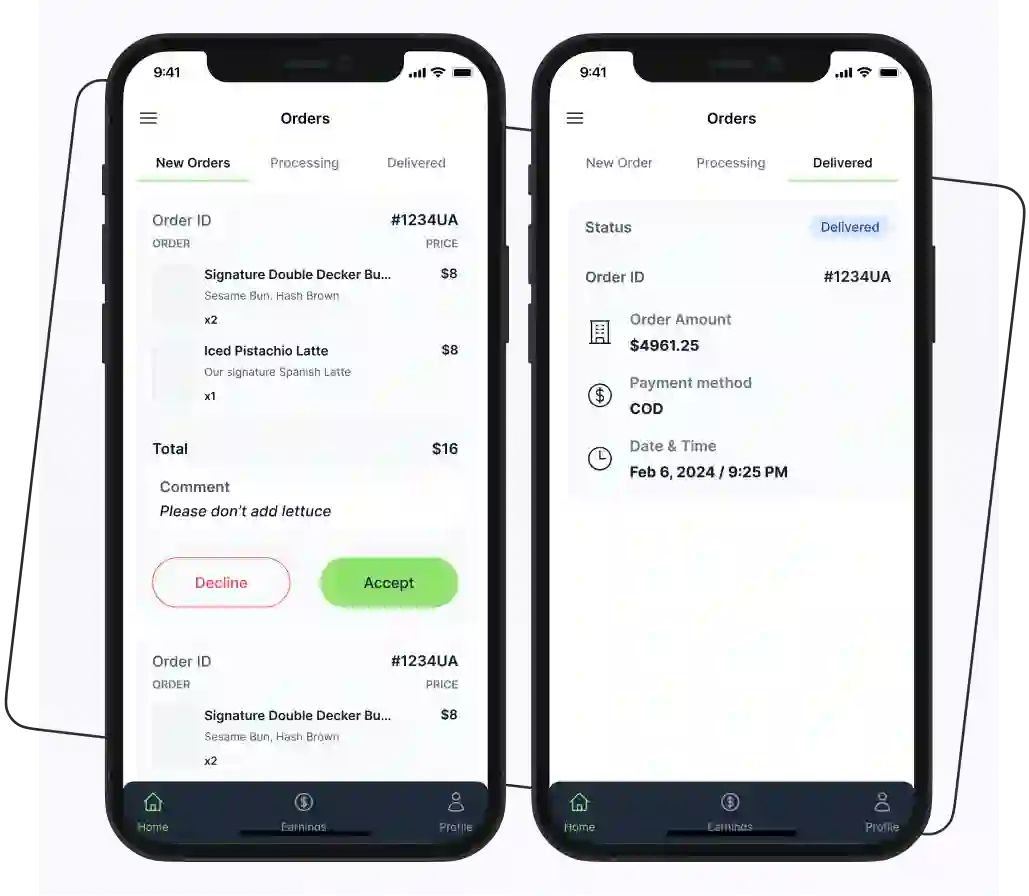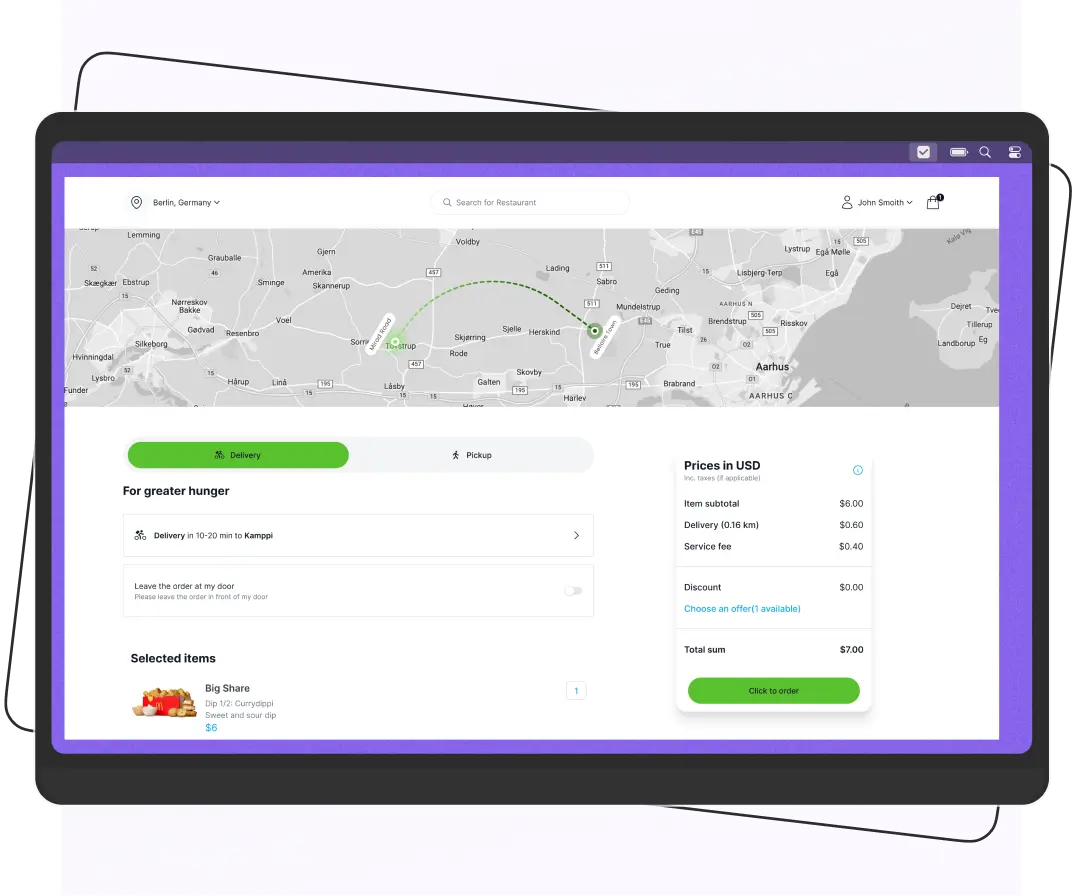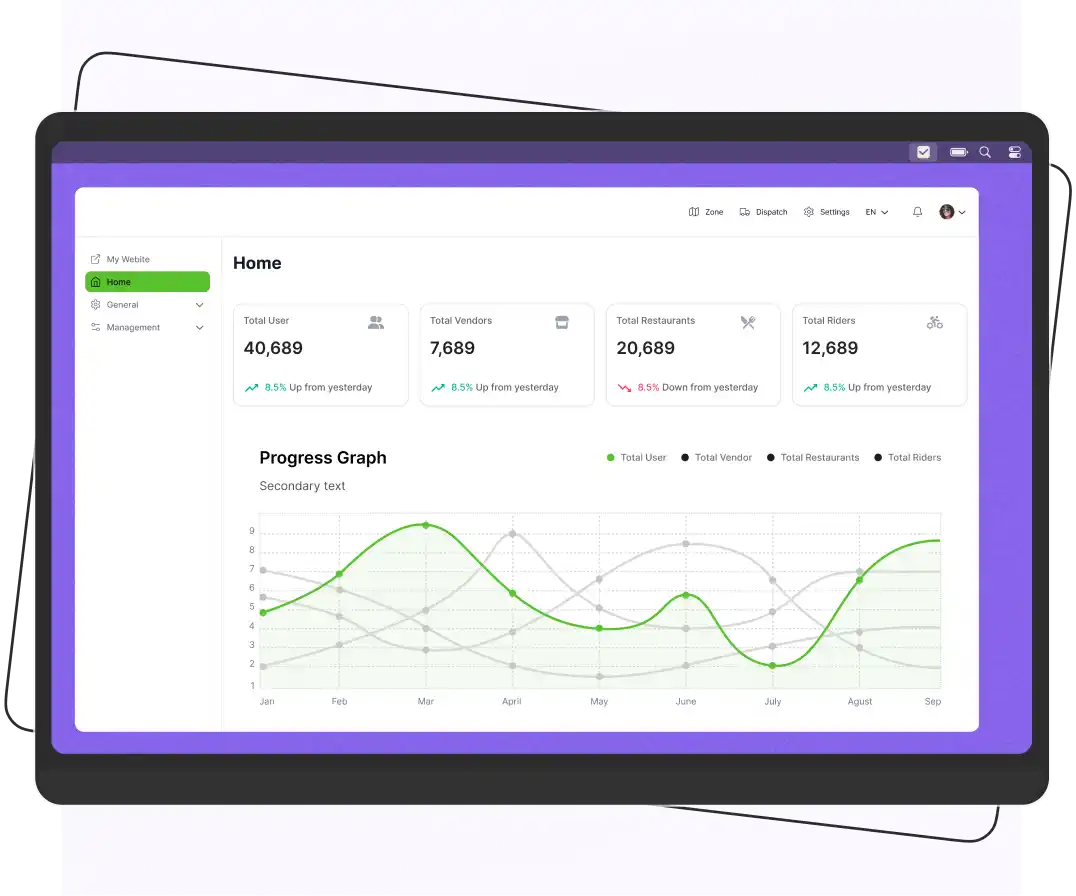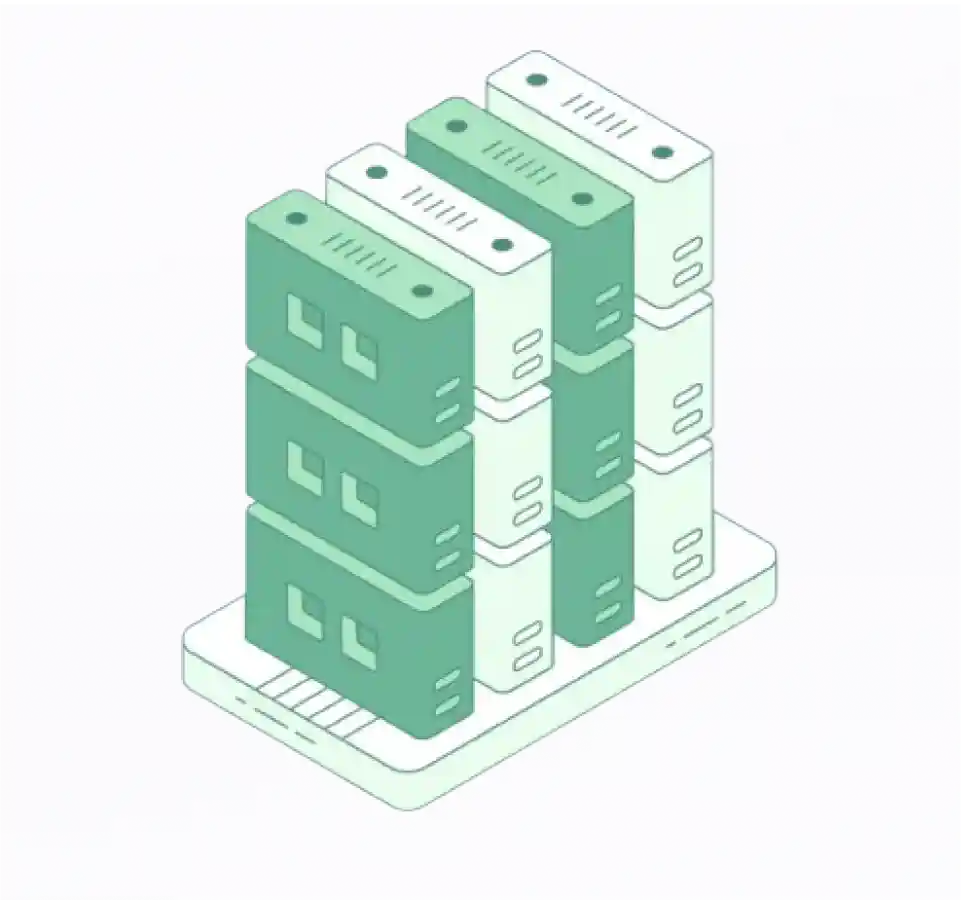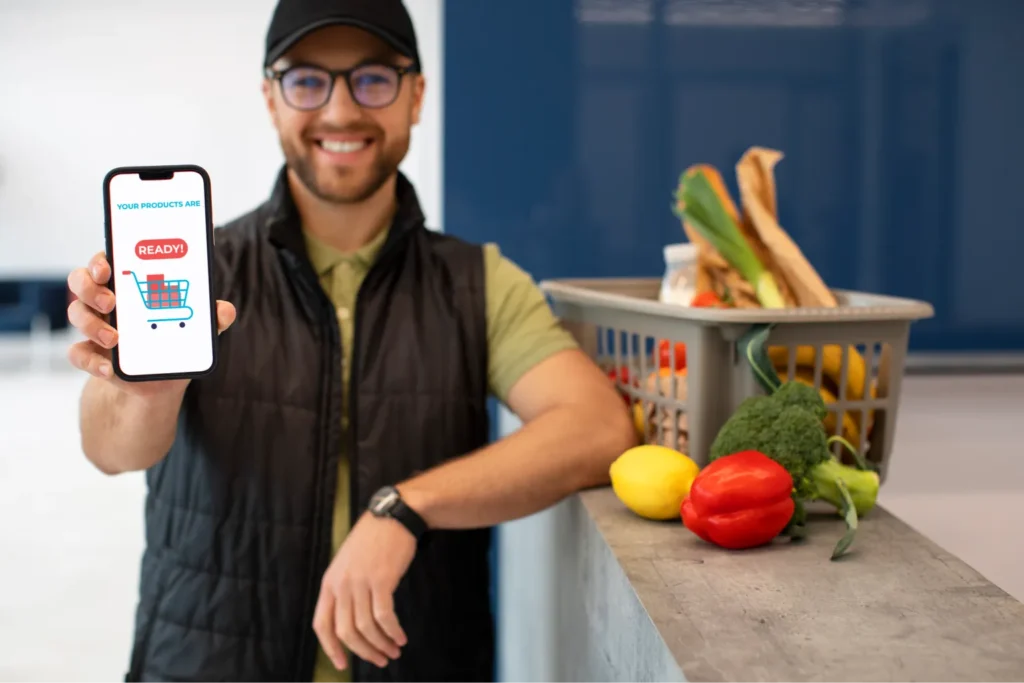
Are you thinking about launching your own custom-branded grocery delivery app? If so, choosing a white-label solution might just be the smartest decision you’ll make for your business. Not only does it help you meet your customer demands, but grows your reach and revenue without starting from scratch.
With the online grocery delivery market projected to reach USD 992.35 billion by 2033, there’s no better time to invest in scalable, efficient technology. A white-label grocery delivery app simplifies everything from order management to customer engagement, giving you a competitive edge in a rapidly growing industry.
Let’s explore what a white-label grocery delivery solution is, how it works, and why it could be a benefit for your business needs.
Supercharge your deliveries with Enatega.
Launch NowWhat is a White Label Grocery Delivery App?
A white-label grocery delivery app is a fully developed web and mobile application that grocery businesses can customize and brand as their own. The core technology is built and maintained by a third-party provider, and the look, feel, and functionality can be tailored to reflect your business identity.
This ready-made yet customizable solution allows businesses to quickly enter the online delivery market without investing heavily in time, resources, or technical expertise.
Examples of White Label Grocery Delivery Platforms
- Enatega
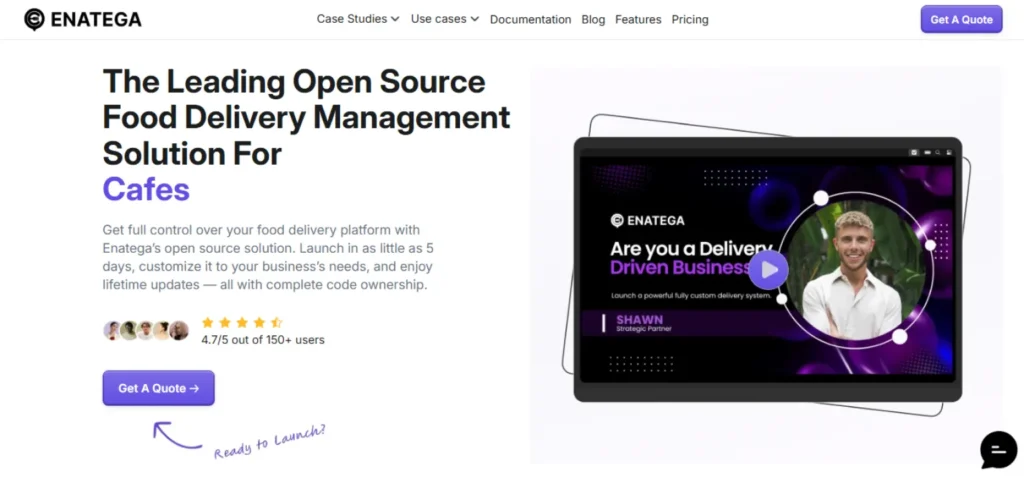
Enatega offers a white-label grocery delivery app solution equipped with customizable interfaces, real-time tracking, multi-platform support (iOS, Android, and Web), and more. It gives businesses complete control over their branding, customer interaction, and order management.
- Instacart
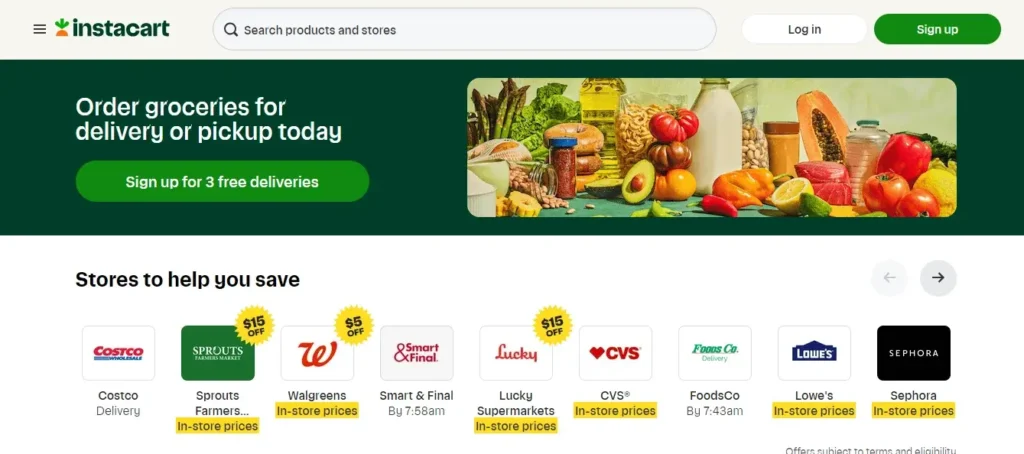
Instacart is widely recognized for its marketplace, and it also provides a white-label solution for retailers. This allows grocery businesses to use Instacart’s infrastructure to deliver groceries under their brand.
- Gopuff
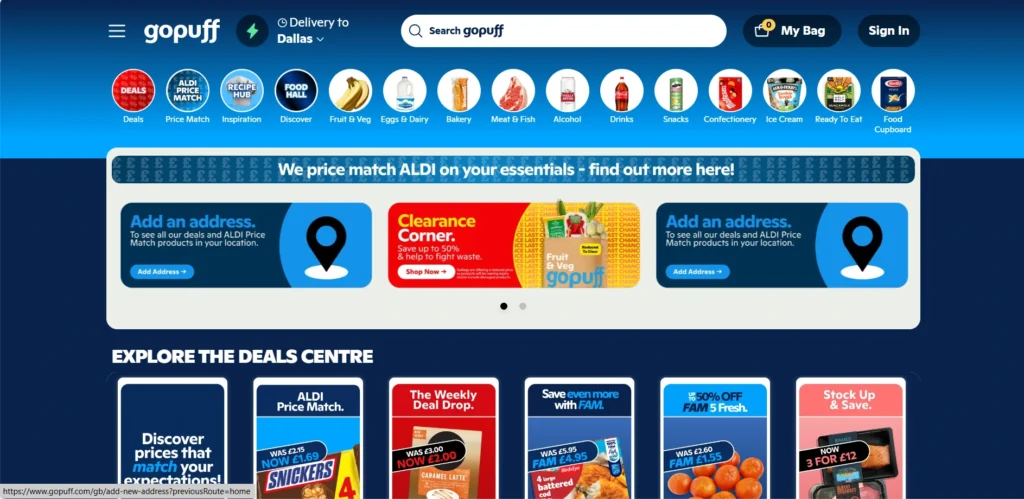
Gopuff offers a white-label platform that enables businesses to provide on-demand delivery of groceries, daily essentials, and more. With its logistics and fulfillment network, businesses can quickly scale their delivery operations without building from the ground up.
How Does a White Label Grocery Delivery App Work?
Below is a process for how a white-label grocery delivery app solution works.
Customization and Branding
Once you choose a white-label platform, the first step is branding the app to reflect your business identity.
- Customize the logo, color palette, fonts, and UI to match your grocery store’s look and feel.
- It allows you to offer a better experience for customers from in-store to online. This ensures consistency and builds trust across every customer interaction.
Order Management and Fulfillment
Customers use the branded mobile app or website to:
- Browse your digital catalog.
- Add groceries to their cart.
- Place orders with preferred delivery or pickup options.
Once the order is placed:
- You receive it instantly via the admin dashboard.
- Staff can process the order and assign it to available delivery personnel.
- You can use your drivers or integrate with third-party delivery services for fulfillment.
Secure Payment Processing
The app integrates with trusted payment gateways to ensure secure transactions.
- Customers can pay using credit/debit cards, digital wallets, or even cash on delivery.
- PCI-compliant security standards protect both customer data and payment details.
Real-Time Tracking and Notifications
Transparency is key to customer satisfaction.
- Customers can track their orders in real time from confirmation to doorstep delivery.
- Automated push notifications alert them of order status updates, delays, and ETA.
Scalability and Maintenance
As your customer base grows, the white-label app grows with you.
- It can handle increased traffic, orders, and locations effortlessly.
- The software provider manages all technical aspects like updates, bug fixes, and server maintenance. Therefore, you can focus on growing your business.
White Label vs Custom App Development
Look at the table below and understand the differences between white label app and custom app development for a grocery delivery business.
| Feature | White Label App Development | Custom App Development |
| Time to Launch | Fast (ready-made, can launch in days or weeks) | Slow (can take several months to develop) |
| Cost | Cost-effective with fixed pricing | High initial cost due to development from scratch |
| Customization | Limited to branding and basic features | Fully customizable based on business requirements |
| Maintenance and Support | Handled by the white-label provider | Handled in-house or via a hired development team |
| Scalability | Scales with the provider’s infrastructure | Scalable, but depends on your tech stack and investment |
| Time and Resource Investment | Minimal | High (requires dedicated team and planning) |
| Flexibility in Features | Restricted to available features | Unlimited build any feature you need |
| Best For | Startups and small to mid-sized grocery businesses | Large businesses or unique use cases requiring full control |
| Examples | Enatega, Instacart White Label, Gopuff White Label | Fully bespoke apps built by agencies or in-house teams |
Why Does Your Grocery Business Need a White Label Delivery App Solution?
Grocery delivery has become a must-have service. But if you’re a grocery business owner, you might be wondering: How can I offer this service without putting a hole in my pocket or sacrificing my brand identity? The answer lies in adopting a white label delivery app solution.
Here is why this approach is essential for your grocery business.
So, let’s explore the benefits and see why using the white label solution for your grocery business is the best decision.
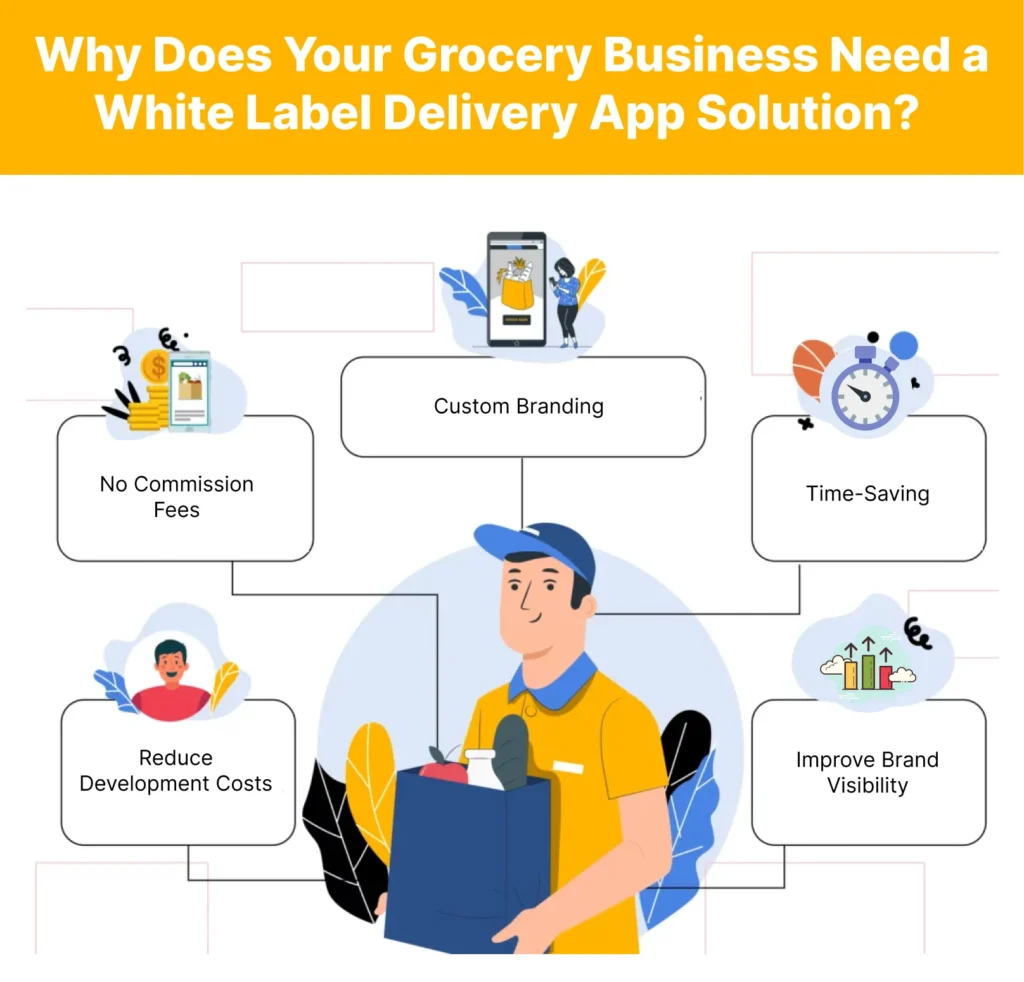
Reduce Development Costs
If you are a grocery store owner and want to expand your services online. You know that a custom app could attract more customers, but the costs of development make you hesitate.
A white-label grocery delivery app provides the best solution and helps you avoid the costs associated with custom app development.
Example
Consider a local grocery chain that opted for a white-label app. Instead of spending thousands on custom development, they launched within weeks using a pre-built solution, allowing them to redirect funds into marketing and inventory rather than app creation.
Custom Branding
With a white-label app, your grocery store can shine with its unique branding. You can customize the app to reflect your store’s identity, ensuring that customers recognize your brand at every step of the shopping journey.
No Commission Fees
One of the biggest hurdles for grocery businesses is the high commission fees charged by third-party delivery platforms. With a white-label solution, you take control of your delivery services, keeping more of your hard-earned revenue.
Example
A small organic grocery store that previously relied on a third-party service switched to a white-label app. They eliminated commission fees and saw their profits increase, allowing them to invest more in local sourcing and customer satisfaction.
Time-Saving
Time is of the essence in business, and a white-label grocery delivery app can save you precious hours. Instead of spending months on development, you can have a fully functional app up and running in a fraction of the time.
Example
A start-up grocery service wanted to enter the market quickly. By using a white-label app, they launched their service in just three weeks, gaining a competitive edge over slower competitors.
Improve Brand Visibility
A white-label app improves your brand’s visibility. With a customizable platform, you can create a direct connection with your customers and encourage repeat business.
A regional grocery store used its white-label app to implement a loyalty program. Customers could earn points for every purchase, which boosted engagement and resulted in a noticeable increase in repeat orders.
Features of White Label Grocery Delivery App Development
A unique idea is not what makes an app stand out. Your app needs to provide excellent functionality and a better experience, with all possible features meeting user expectations.
Let us now explore the top features that every successful white label grocery delivery app has to include to make it a great one.
| Features | Description |
| In-App Chat Support | In-app chat support is an important feature that allows businesses to offer real-time customer assistance directly within the app. It handles common customer queries with a human-like tone, ensuring users feel heard and supported. With automated systems, it can manage hundreds of customer interactions simultaneously, reducing wait times. |
| Inventory Management | The inventory management feature allows businesses to monitor stock levels in real time, manage product details like pricing and descriptions, and set automatic reorder points. This prevents issues like overstocking or running out of popular items, helping maintain a consistent shopping experience. |
| Delivery Scheduling | Delivery scheduling gives users the flexibility to choose a delivery time that best suits their routine. This feature helps customers to plan, making the service more convenient and personalized. It’s especially important for busy families and working professionals who want groceries delivered to their doorsteps. |
| Secure Payment Integration | Secure payment integration ensures that transactions are processed quickly and safely. By offering multiple payment methods such as credit/debit cards, digital wallets, or even cash on delivery, the app caters to different customer preferences. Integration with trusted, PCI-compliant gateways builds trust and improves the overall checkout experience. |
| Push Notifications | Push notifications are essential for keeping users engaged and informed. They help deliver real-time updates on order status, promotions, and personalized offers. However, their effectiveness depends on timing and relevance. A well-crafted, targeted notification can boost user retention, while irrelevant ones can lead to users disabling notifications. |
| Multi-Platform Support | A good white-label solution will ensure your grocery delivery app works easily across Android, iOS, and web platforms. |
| Customizable Branding | It is one of the core advantages of a white-label app. Businesses can personalize the app’s appearance by integrating their logo, brand colors, and overall design aesthetic. This helps maintain brand identity and provides a consistent user experience across both physical and digital touchpoints. |
| Advanced Analytics Dashboard | With real-time data, businesses can identify their most-used features, track purchasing trends, and detect areas that may need improvement. These analytics also enable predictive analysis, allowing for proactive decision-making and smarter marketing strategies. |
| Rating and Review System | It enables users to share their feedback and rate the service or specific items. This feature builds trust and transparency. Regularly reviewing feedback helps businesses maintain high standards and strengthen relationships with their customers. |
| Route Optimization | It helps delivery drivers find the most efficient routes using real-time GPS and mapping data. By considering factors like traffic conditions and delivery priorities, it reduces delivery times and fuel consumption. This leads to faster deliveries and lower operational costs, which benefit both the business and its customers. |
| Scalability | As your customer base and order volume grow, the app should be able to support that expansion without major structural changes. This ensures that businesses can scale confidently without sacrificing performance or user experience. |
| Integration Capabilities | A white-label app should easily connect with your existing POS systems, eCommerce platforms, CRMs, and ERPs. |
Steps to Implement a White Label Grocery Delivery App
Implementing an on demand white label grocery delivery app solution is much easier and faster than building a custom app from scratch. With fewer risks and a proven framework, you can get your grocery business online in a short time.
Below are the key steps to guide you through the process.
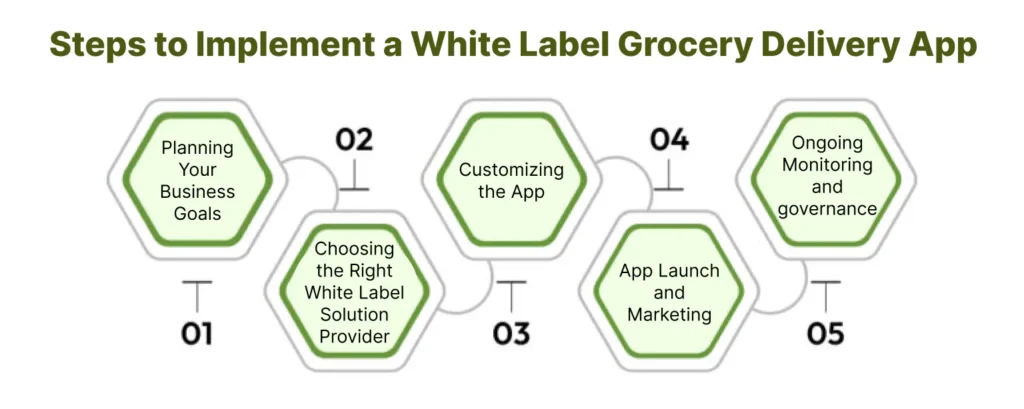
1. Planning Your Business Goals
Start by defining your vision for the grocery delivery app. What do you want to achieve: more orders, higher customer satisfaction, or better delivery management?
Set clear goals and identify your target audience. Think about the types of customers you want to reach and what problems your app will solve for them.
2. Choosing the Right White Label Solution Provider
Next, look for a reliable white label app provider with experience in the grocery delivery industry. Check their portfolio, customer reviews, and the features they offer. A good provider will offer scalable, customizable, and user-friendly solutions that fit your business needs.
3. Customizing the App
Once you’ve chosen a provider, the customization process begins. This step involves adding your business logo, colors, and branding elements to the app. You can also request feature adjustments based on your store’s requirements. The goal is to make the app feel like it was built just for your business.
4. App Launch and Marketing
Before going live, test your app thoroughly to ensure everything works smoothly. Fix any bugs and double-check the user experience. Then, prepare a marketing campaign to promote your new app.
Highlight key benefits like convenience, fast delivery, and time savings. Use social media, email marketing, and in-store promotions to spread the word.
5. Ongoing Monitoring and Management
After the app is launched, keep a close eye on its performance. Track key metrics such as order volume, user retention, app ratings, and delivery times. Use this data to make improvements over time and ensure your customers have the best possible experience.
How to Choose the Right White Label Grocery Delivery Solution?
Below are some tips to help you choose the right grocery delivery app solution that meets your business needs.
- First, you have to define your needs and goals.
- Consider your target audience and identify what they need or do not need.
- Determine what functionality is necessary for your business, such as real-time order tracking, multiple payment options, inventory management, and delivery scheduling.
- Look for providers with a proven track record in developing a grocery delivery solution.
- Always look for providers that offer 24/7 technical support and clear communication channels for updates and troubleshooting.
- Read reviews of past customers to get an idea of the provider’s work.
- Select the solution that can adapt to your business growth.
- Review the pricing model and ensure that it fits within your budget.
Cost to Build a White Label Grocery Delivery App
The cost to build a white-label grocery delivery software can range from $15,000 – $150,000+. However, it depends on the complexity, features, and customization required.
| Basic App with standard features | $15,000 – $30,000 |
| Medium App | $30,000 – $70,000 |
| Advanced App with custom features | $70,000 – $150,000 or more |
FAQs
1. What is the Instacart clone app solution?
The Instacart clone app solution is a ready-made platform that replicates the features of Instacart. It enables businesses to launch their online grocery delivery services. It includes functionalities like user registration, product browsing, cart management, and real-time order tracking.
2. What is the white label food delivery platform?
A white label food delivery platform is a customizable software solution that businesses can brand as their own to offer food delivery services.
Supercharge your deliveries with Enatega.
Launch NowConclusion
The thought of creating a grocery delivery app from scratch might seem daunting. Grocery stores aren’t known for being the most technologically advanced businesses. However, white label options are an easy fix to the problem of grocery app development.
So, if you want to build your white label grocery delivery app like Instacart, then consult the grocery delivery app development company, Enatega. We offer a cost-effective solution tailored to your budget and business goals.
Book a free demo with us today and get help from the industry's best experts.









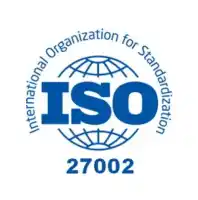
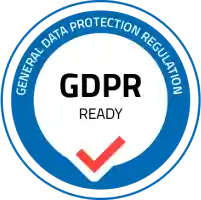


 IOS
IOS Android
Android Web
Web